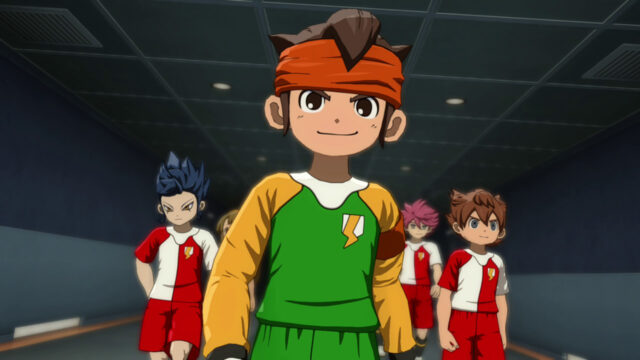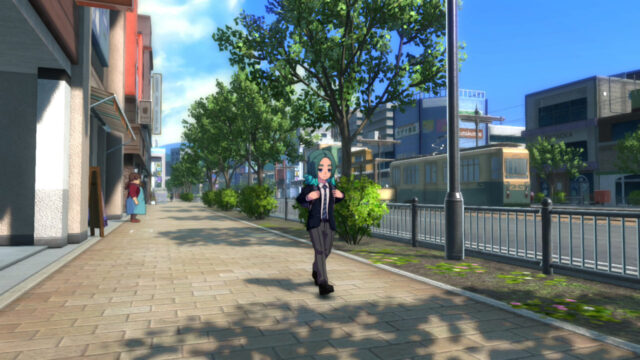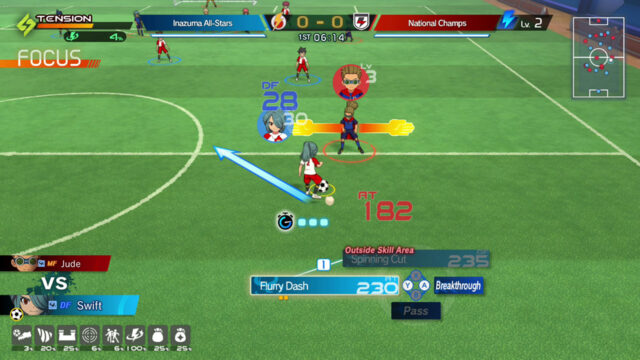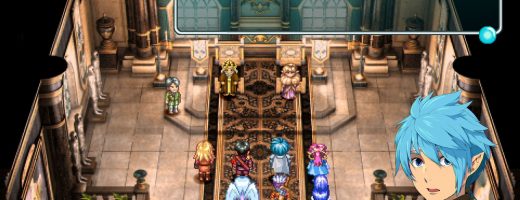Inazuma Eleven: Victory Road Beta Demo Impression
Inazuma Eleven: Victory Road’s beta demo shows that the series’ take on the game is still standing very strong.
It’s taken over a decade, but Level-5 has finally reached a point where it getting ready to unleash a new Inazuma Eleven upon the world. After experiencing some difficulty translating its football RPG away from Nintendo’s dual-screened handhelds, a worldwide beta demo for Inazuma Eleven: Victory Road is now available on Nintendo Switch. After so long, I’m more than excited to be able to return to the series’ over-the-top, but incredibly charming take on the world’s most popular sport. Despite RPG-style elements encroaching on sports sims across the gaming sphere, none has blended them so well.
While enduringly popular in Japan as a multimedia franchise, the series is more likely to be known by those in Europe than in North America. Nintendo of Europe brought over five of the series’ six mainline games — which are effectively divided into two trilogies — on Nintendo DS and 3DS, while only the first game received a (fully relocalised) release across the Atlantic. However, with this reboot Level-5 is aiming for global appeal and a wider audience with releases planned on Nintendo Switch, PC, PlayStation 4, PlayStation 5, and mobile platforms.

Inazuma Eleven: Victory Road’s upgraded presentation values work well with the series’ graphical style.
It should be noted that the demo is limited in its content at launch, largely restricted to a “Competition Mode”, where players can use teams to take on bot teams or play online. This mode itself is also restricted to a couple of pre-built teams that players can upgrade and only a few bot teams to choose from. However, Level-5 is planning to introduce a story mode section to the demo at a later date, and the demo does what it needs to in giving players an introduction to how its take on the “beautiful game” plays out. Much of the appeal for Inazuma Eleven comes from its charming story and characters, which already takes junior football to its extremes before going completely haywire with aliens and time-travel. It’s Saturday morning cartoon craziness at its best, imparting the key themes of friendship, working hard to overcome adversity, and so forth with aplomb, but to be seen how well Victory Road continues that history.
Inazuma Eleven: Victory Road ends up with the same basics series fans will expect, with the controls successfully translated to gamepad buttons. Competition mode is focused on regular 11-a-side matches, played to a 30-minute in-game half (which translates to four or five minutes real-time). While on the ball, players can dribble it up or across the pitch or pass it to teammates as they look to advance on the opposition’s goal and set up a shot. While defending, players can move their controlled player around, trying to intercept passes or tackle the opponent on the ball. When players come into contact with each other, or it’s time to shoot on goal, the game focuses in on these clashes, where the trademark special skills come into play, adding the flashy special abilities such as summoning a brick wall to stop a shot, or unleashing a flaming spiralling strike.
There are a couple of significant new elements to the gameplay. The first is that clashes between individual players are now more dynamic; while the option to use special moves to get past a defender is still there, players can now try and avoid them or pass the ball away rather than be forced into a head-to-head clash. Meanwhile, attacks on goal, both offensively and defensively, make use of a special Zone mode. Here time is slowed down, allowing players to set up shots, potentially crossing it to a teammate to increase the rating of the shot. However, during this time, defenders can also look to head towards positions that might help block the shot.
This Zone mode works hand in hand with how the game treats shooting and goalkeepers. Ultimately actually aiming for a specific part of the net is less important than the actual ratings of the shot. Each goalkeeper has their own Keeper Power rating, which is used to stop shots, reducing based on the shot power each time, and it’s only one this reaches zero that the ball will get past them. Therefore, increasing the shot power or getting as many shots in as possible — or reducing both power and number of shots that get through if defending — is the way to victory. It’s a system that illustrates how player attributes can be just as important as general football nous, and with teams being of similar levels in the demo so far, games have been tight low scoring affairs, often ending 1-0 or 2-0.
The controls and UI generally work very well, although there are some annoyances. It will take a little bit of time for players to get used to the full range of options in certain situations, and trying to select the desired player to control when defending is often very frustrating. While it certainly isn’t trying to be a proper simulation of football, many of the ideas of the game will put players in good stead. All of the game’s elements, including how player stats and the various numbers and UI elements thrown around, are given video tutorials as they come up during players’ first game, which will be annoying for those who are familiar with the returning systems, but it is at least a one-time thing. While there are certain quirks that might grate, all of the elements link together nicely and there’s a clear pathway to picking up new tricks and tactics, which puts it in good stead.
Players can adjust their line-ups from the limited players available, including selecting from different formations and special tactics. The demo also introduces the game’s character growth systems. Each match will grant experience for players to level up, while players can also be equipped with stat-increasing boots and accessories. The Competition Mode also introduces spirits, which are obtained by using special moves during games and can be used to further upgrade characters. There are other growth systems present in the full game as well as numerous methods to recruit players, with a huge selection promised; the demo does contain some things to unlock, such as new kits, but the initial feature and content set doesn’t have enough to justify the time commitment to get them right now.
As expected with the game coming to modern consoles, the presentation has taken a major step up, but still retains that same look and feel from the series history. In fact, the art style works very nicely with the higher fidelity and it allows the characters, which already had a strong presence thanks to their designs, to stand out further. In addition, Victory Road includes full English commentary on matches in the demo, including some TV-style introductions to the teams. It’s a nice touch that lends a good sense of occasion to everything and just helps make it feel like players are involved in a proper match.
Inazuma Eleven: Victory Road’s beta demo shows that the series’ take on the game is still standing very strong despite its transition to new controls, and the new elements and presentation upgrades are very pleasing to witness. The main test will be to come as to whether the story and its full set of content and features has the draw and depth to build on its strong base, but there’s a lot to be excited for with Inazuma Eleven’s return later this year.








Recent Comments